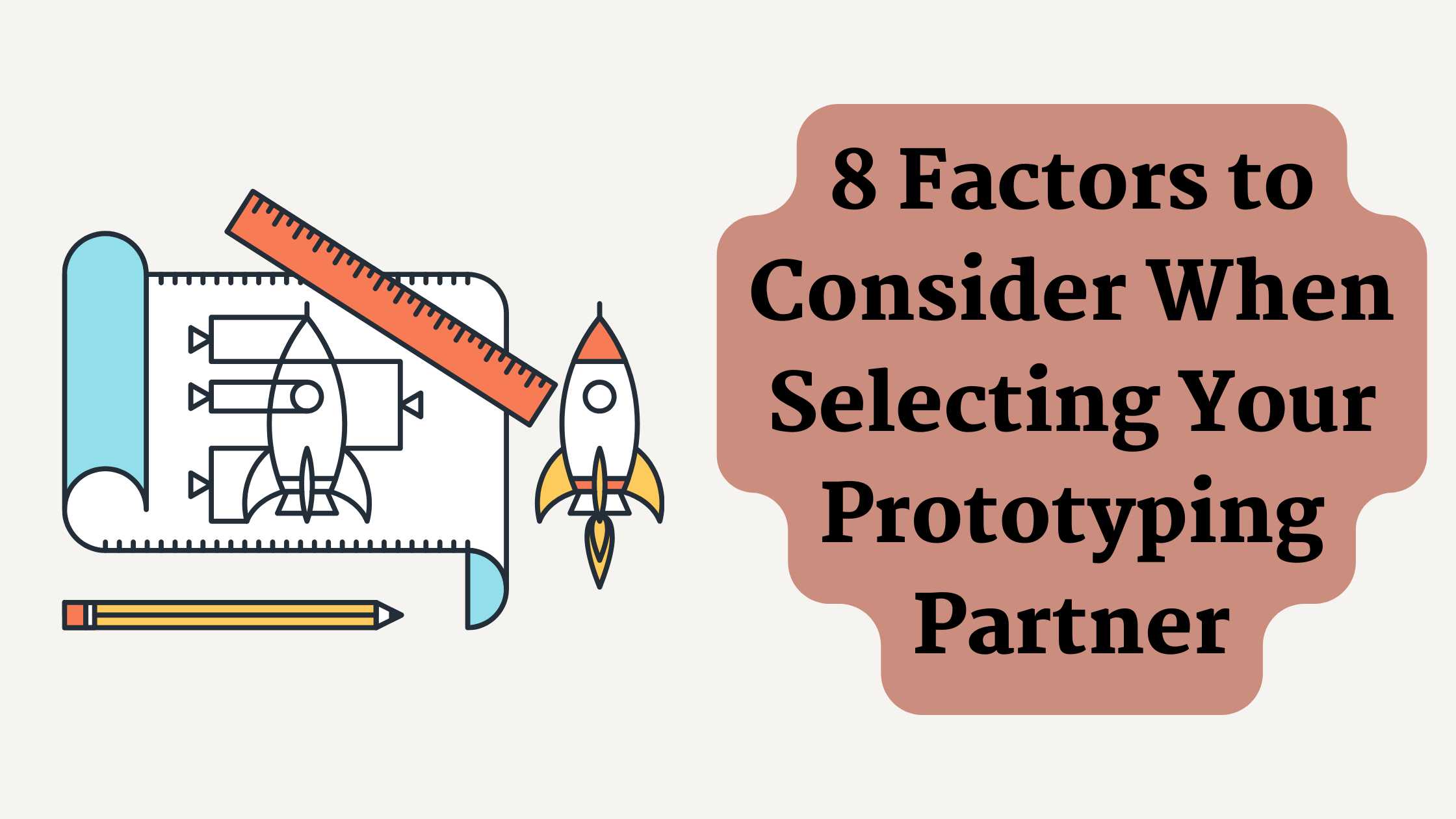
Prototyping has become an essential tool in the fast-paced business world of today, helping companies remain competitive by testing ideas and concepts before investing considerable resources in full production.
Unfortunately, not every organization possesses the in-house capacity required to produce prototypes efficiently. This is where choosing the right prototyping partner becomes critical. But with the global rapid prototyping market valued at $2.5 billion in 2021 and projected to reach $15 billion by 2031, this is not an easy task.
In this article, we will outline some key considerations when selecting a prototyping partner.
Expertise and Experience
When selecting a prototyping partner, you must place a strong emphasis on their expertise and experience. Prioritize seeking partners who have a wealth of experience in your industry or have successfully tackled projects with similarities to yours. Furthermore, ensure that they possess a deep understanding of the materials and techniques essential for your specific prototype.
For a comprehensive evaluation of their capabilities, don’t hesitate to request references and explore case studies spotlighting their previous achievements. An ideal prototyping partner should present a portfolio that unequivocally showcases their prowess in delivering top-tier prototypes that not only meet but often surpass both design and functionality prerequisites.
Partnering with a reliable and experienced provider, such as 3ERP, can bring invaluable guidance and unique insights throughout your project journey. Consider exploring their website, 3erp.com, for more detailed information on how they can elevate your prototyping projects to new heights.
Prototyping Technologies and Capabilities
Prototyping capabilities provided by your partner can have a substantial impact on the quality and feasibility of your prototypes. Different projects may call for different prototyping techniques like 3D printing, CNC machining, injection molding, or laser cutting. Be sure to select a partner that has access to these technologies so they can effectively implement them into their projects.
Additionally, consider their capacity and turnaround time. Can they handle the volume of prototypes you require within your project timeline? Reliable partners should have a streamlined process for prototype production to meet your needs efficiently.
Material Selection and Sourcing
Prototyping material selection and procurement are key to prototyping projects. Their selection can have a major effect on the functionality and appearance of final products. An experienced prototyping partner should have extensive knowledge of material sourcing processes to meet both project requirements and budget constraints effectively.
Ensuring they offer access to a range of materials to meet your specific requirements is also key to providing flexibility in meeting those needs. Furthermore, ensure they offer guidance in selecting appropriate materials according to factors like strength, durability, and cost-effectiveness.
Quality Control and Testing
The quality of your prototypes is paramount, as they serve as the basis for further development and production. A reputable prototyping partner should have stringent quality control processes in place. Inquire about their quality assurance methods and whether they conduct thorough testing and inspections of prototypes before delivery.
Consider whether they can provide documentation and reports on the quality and performance of your prototypes. Prototyping partners who are committed to delivering high-quality results will take the necessary steps to ensure your prototypes meet the required standards.
Cost and Budget Considerations
Budget constraints are a significant concern for most projects, and prototyping is no exception.
While it’s important to seek cost-effective solutions, be cautious of choosing a partner solely based on the lowest price. Quality and expertise should be prioritized alongside affordability.
Communication and Collaboration
Effective communication and collaboration are essential when working with a prototyping partner. The ability to convey your ideas, requirements, and feedback clearly can significantly impact the success of your project. Look for partners who demonstrate a commitment to open and transparent communication.
Additionally, consider the geographical location of your prototyping partner. Proximity can facilitate face-to-face meetings and enhance collaboration, but it’s not always necessary, especially if the partner has established effective remote communication channels.
Intellectual Property Protection
Before sharing your designs and concepts with a prototyping partner, you need to take intellectual property (IP) into consideration. Before signing any agreements, discuss and clarify ownership of design files, prototypes, and any derivative works created during the prototyping process.
A trustworthy partner should have a clear policy on IP protection and be willing to work with you to establish legal safeguards through non-disclosure agreements (NDAs) or other contractual arrangements.
Scalability and Long-Term Partnership
Consider whether your prototyping partner has the scalability and capacity to support your project as it progresses from the prototyping stage to production. A long-term partnership can be advantageous, as it reduces the need to switch partners as your project evolves.
Discuss your plans and growth projections with potential partners to assess their ability to meet your ongoing needs. Partners who can adapt to your changing requirements and provide continuity in production can be invaluable.
Final Words
Selecting the right prototyping partner is a critical decision in the product development process. Before making a selection, it is important to thoroughly assess all of the criteria presented here, such as expertise, technology capabilities, material selection, budgetary considerations, and scalability requirements.
Remember that your prototyping partner is more than a service provider. They are collaborators in helping bring your innovative ideas to fruition. By selecting one with the appropriate blend of skills, experience, and quality commitment, you can streamline prototyping processes, reduce development risks, and ultimately bring successful products to market faster.